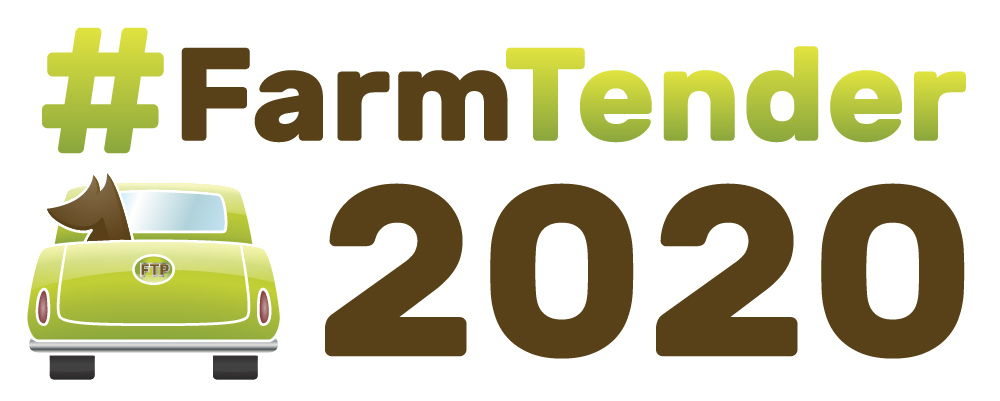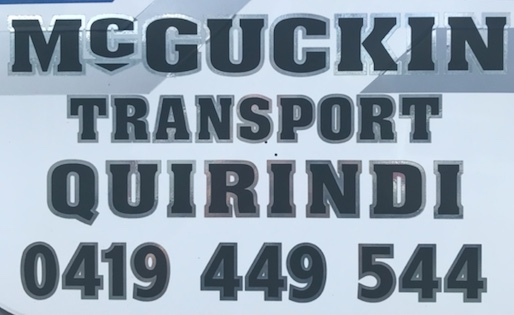Hay stacking do's and don'ts
- By: "Farm Tender" News
- Water & Irrigation News
- Feb 23, 2020
- 2225 views
- Share

This article is bought to you by McGuckin Transport
Stacking hay – it’s a task that we do every day – it’s second nature – and therein lies the problem, statistics show that many work place incidents are as a result of ‘complacency’, from doing a job so many times that we tend to forget the inherent risks that are associated with such tasks. This Hay Stacking Guide has been produced for fodder owners and managers to use as a training tool for new employees, and for refreshing of skills for longer term workers.
General Safety Checks and Notes
It is very important to stack bales correctly to avoid creating hazards to yourself and other people. The following should always be adhered to:
- Never should incorrect equipment be used when handling bales. Only use equipment that has been designed for the job and meets Australian Design Rules. Ensure your machinery is well maintained.
- Ensure staff have been adequately trained in the use of the equipment – records of competency should be maintained.
- Build stacks on firm, level ground, away from fire hazards, sources of ignition, overhead power lines, dwelling, boundary fences, and footpaths.
- Ensure stacks are always safe and check regularly for movement.
- Take precautions to prevent mechanical damage, for example by transport, rodents and undermining by cattle and other livestock.
- Never stack higher than the lifting capabilities of the handling equipment used for stacking and destacking.
- Never load more bales onto handling equipment, to a height higher than the equipment is designed to handle, nor heavier than the rated capacity of the machine.
Stacking Hay - Technique
When stacking hay, consider the below method (Figure 1). By placing Bale 1 onto Bale 2, and then picking up Bale 1 and 2 as a pair, before placing on top of Bale 3, is a safer method than Figure 2. This is because if you stack hay one on top of the other, on top of the other, singularly, the stack will tend to become unstable. The photo at the introduction to this Guide shows well stacked hay, using the Figure 1 method.

Figure 1: Safe method of stacking bales

Figure 2: Less safe method of stacking bales – stack can become unstable
Never build a conventional stack of bales higher than the limits of safe access to and from the stack. Height will also be limited by the means used for getting bales from the loads onto the stack.
Stacks will be more stable if their height does not exceed 1.5 times the shortest base dimension. This is a good ‘rule of thumb’ to use. For example, if a stack is 4.8m wide (two large squares along the bottom), and 12m long (10 large squares), then a safe height is equal to or less than 7.2m (4.8m x 1.5). Refer to Figure 3 below for further information.

Figure 3: Example of stacked hay, less than 1.5 x the shortest base dimension
Photo credit: www.facebook.com/ausfodder
Big round bales are usually either stacked on their ends (if covered), or on their sides in a pyramid.
When stacking on ends – always use bales of the same diameter.
#FarmTender2020 - Focus on Farming Systems - June 5th, Bendigo, Vic

Tickets available now - click here
Pyramid stacking – do not stack more than four layers high. If necessary (particularly if bales are very dense), each bale on the bottom layer may be chocked to enable safe and convenient destacking and helps prevent unwanted movement.

Figure 4: Pyramid stacking and end stacking
Photo credit: Department of Labour – New Zealand
Stacking around Powerlines
Australian legislation requires that there be no persons or plant and equipment to be within designated exclusion zones next to, and below, power lines.
This means that no part of machinery, hay, or persons should be within the exclusion zone. Care must be taken to ensure that at no time does machinery or hay ‘swing into’ that exclusion zone (for example when lifting and moving hay).

Figure 5: Stacking around powerlines
Photo credit: www.worksafe.qld.gov.au
For further information on these regulations, please contact your local Worksafe, or Electrical Safety Regulator in your state. Heavy penalties apply to businesses and individuals who do not maintain safe working distances around powerlines.
Stacking/Loading for Transport
When stacking/loading hay for the purposes of transport, the same general techniques should be employed as when you are stacking on the ground, however there are some additional issues to be aware of:
- Ensure that no one is standing in the vicinity of the truck/trailer being loaded – ESPECIALLY on the other side of the truck – ensure you know where everyone is located before you start.
- Do not ‘push’ too hard against the hay that is already loaded on the truck/trailer – this can cause it to become unstable and topple off.
- When unloading, do not come in too fast with your loader to the hay, as this again may cause ‘pushing’ to the hay behind, causing it to become unstable.

Figure 6: Loading hay for transport
Photo credit: www.facebook.com/ausfodder
Destacking
There are some common-sense precautions that should be taken when removing bales from a stack or a load. These include:
- Taking care not to dislodge other bales – when lifting bales off a stack and reversing away, ensure that the bales are well clear before moving, do not ‘drag’ the bale across the surface of the bale below, this can lead to stacks becoming unstable.
- Never remove bales from the bottom of overlapping layers, leaving overhanging bales unsupported.
- Falls from stacks may occur during destacking. This can be caused by trying to free jammed bales; picking up bales with broken strings, and; falling from edges. When destacking, plan the work to avoid incidents like these.
- Always remember to use a safe means of access to the stack.
In providing services, information or advice neither the Australian Fodder Industry Association (AFIA), Ferriby Group of Companies, nor any of their officers, employees or agents shall be liable for any loss, damage or expense whatsoever sustained by any person or entity as a result of being provided such services, information or advice.
https://www.afia.org.au/index.php
Ad - McGuckin Transport - Quality Grain and Hay Transporters - Ad
 .
. 










Share Ag News Via